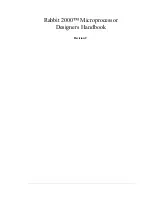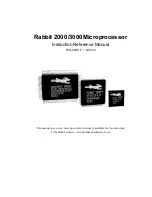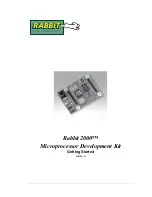
Principles of Operation
103
shows an example of a frequency measurement operation. In this example, three
events are counted during a duration of 300 ms. The frequency, then, is 10 Hz, since 10 Hz =
3/(.3 s).
Figure 33: Example of Frequency Measurement
Rate Generation
Use rate generation mode to generate a continuous pulse output signal from the counter; this
mode is sometimes referred to as continuous pulse output or pulse train output. You can use
this pulse output signal as an external clock to pace other operations, such as analog input,
analog output, or other counter/timer operations.
While the pulse output operation is enabled, the counter outputs a pulse of the specified type
and frequency continuously. As soon as the operation is disabled, rate generation stops.
The period of the output pulse is determined by the clock input signal and the external clock
divider. If you are using one counter (not cascaded), you can output pulses using a maximum
frequency of 10 MHz (this is the frequency of the clock output signal). In rate generation
mode, either the internal or external C/T clock input source is appropriate depending on your
application; refer to
for more information on the C/T clock source.
Using software, specify the counter/timer mode as rate generation (rate), the C/T clock
source as either internal or external, the polarity of the output pulses (high-to-low transitions
or low-to-high transitions), the duty cycle of the output pulses, and the gate type that enables
the operation. Refer to
for more information on pulse output signals and to
for more information on gate types.
Ensure that the signals are wired appropriately.
shows one example of connecting a
pulse output operation. This example uses the DT740 screw terminal panel, user counter 0,
and a software gate type.
External C/T
Clock
Input Signal
frequency measurement
starts
frequency
measurement stops
Duration over which the
frequency is measured = 300 ms
3 Events Counted
Summary of Contents for Data Translation DT3034
Page 2: ...DT3034 User s UM 22359 M Manual Title Page...
Page 5: ......
Page 11: ...Contents 10...
Page 15: ...About this Manual 14...
Page 16: ...15 1 Overview Features 16 Supported Software 18 Accessories 19 Getting Started Procedure 20...
Page 22: ...Part 1 Getting Started...
Page 23: ......
Page 33: ...Chapter 2 32...
Page 39: ...Chapter 3 38...
Page 68: ...Part 2 Using Your Board...
Page 69: ......
Page 111: ...Chapter 6 110...
Page 123: ...Chapter 7 122...
Page 135: ...Chapter 8 134...
Page 141: ...Chapter 9 140...
Page 153: ...Appendix A 152...
Page 154: ...153 B Connector Pin Assignments...
















































